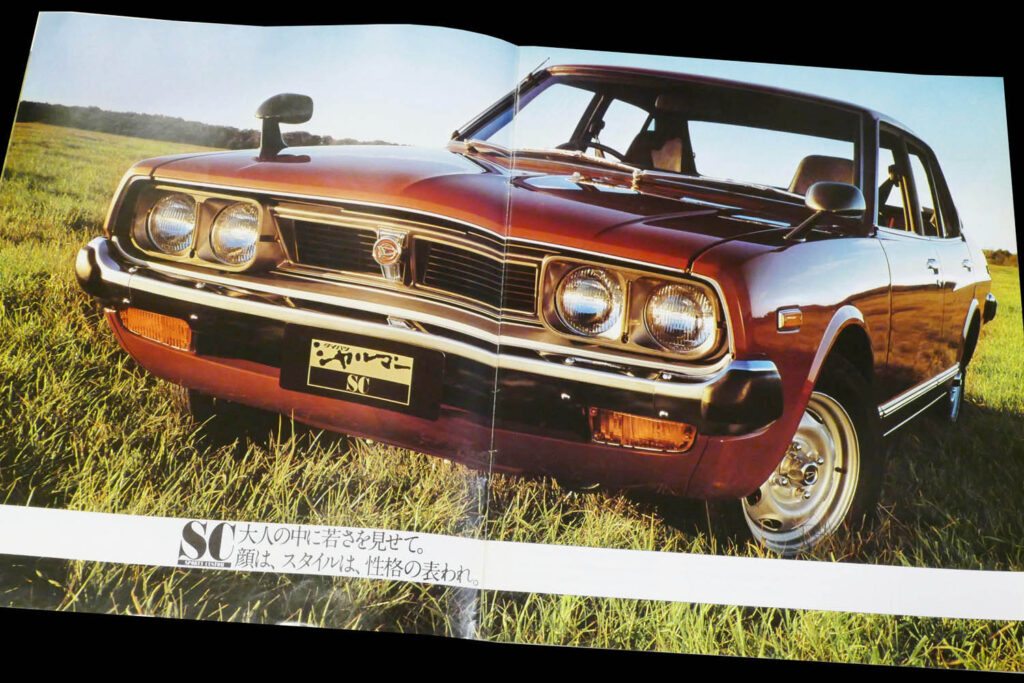Daihatsu’s high-end compact car introduced to the world 40 years ago
Daihatsu entered into a business alliance with Toyota in 1967, working together to develop a new four-wheel passenger car brand. In this issue, we look back 40 years ago, in 1974, at the first-generation Charmant, a high-end compact car developed independently by Daihatsu based on the second-generation Corolla, from the catalog of that time.
The front door panels are completely identical to those of the Corolla
The car Charmant was Daihatsu’s tailor-made model based on Toyota’s second-generation Corolla (TE20/KE20). Therefore, the 2335 mm wheelbase was shared with the Corolla, and in the visible part, the outer panels of the four-door front doors were diverted from those of the Corolla four-door sedan in the Charmant. For your information, I have included a photo of a Corolla sedan in this article, but even the author, who was a car enthusiast from an early age, knew that the base was a Corolla from that time, but did not recognize that the door panels were common.
Also, when it comes to working with Toyota, there was a precedent in the Consorte (i.e. Toyota’s Publica, the first generation Starlet), which preceded the Charmant in small cars, and we will discuss that story again when the opportunity presents itself, along with its successor, the Applause, among others.
The round-eyed four-lamps were a symbol of the upper class
The Charmant was also Daihatsu’s top-of-the-range car, so it was characterized by a more upmarket feel than the base Corolla. Symbolic of this was the design of the front mask: whereas the Corolla at the time had two round headlights, the Charmant had four round headlights (the description in the catalog was “four-lens dual headlamps”).
“These four lights are very rare in the 1400 and 1200 classes when you look around town. So when I ride a Charmant, people ask me if it’s a 1600 or an 1800.”
This is a statement in the catalog. The front grille of the second-generation Corolla was also surrounded by a grey resin grille, giving it an advanced and sporty appearance, but the mask of the Charmant was a design that expressed a typical, orthodox, deeply sculpted sense of luxury for a domestic passenger car of the time.
Advanced equipment top-up
Speaking of equipment, the interior introduction page also conveys the atmosphere typical of the period. Equipment that was commonplace in later passenger cars, such as interlinked wipers, a multi-use lever that integrated functions such as indicator (lane changer), lights, passing and high-beam into a single lever, and anti-glare inner mirrors, are all introduced with photographs, as they were still at the beginning of their appearance.
Also nostalgic was the cassette stereo with FM radio, but even more nostalgic was the AM radio, which was preset by pressing a button for the station to be broadcast (the button could be pressed after causing it to be pressed). The instrument panel was designed with a row of square meters, and depending on the grade, there was a speedometer and an analog clock of the same size, which was also typical of the instrument panels of the 1970s.
There are also knitted fabric seats, two fully reclining front seats, rear high-back seats, luxury carpets up to the door trims, a boot opener, and other tear-jerking (!) features. The fact that the Charmant is equipped with and introduces many features that make it appealing as a high-end car is also a testament to the car’s launch.
The front-rear weight distribution was a whopping 50.5:49.5
Of course, the mechanism was also well introduced at the end of the book. In the section on the 1400cc and 1200cc engines that complied with the 1976 emission regulations, graphs showing the performance curves that were always included at the time, and, if it is rude to say so, a discussion of the front-rear weight balance of a whopping 50.5:49.5. The suspension, with strut-type coil springs on the front wheels and half-disk springs on the rear wheels, was described as “soft to the touch.”
